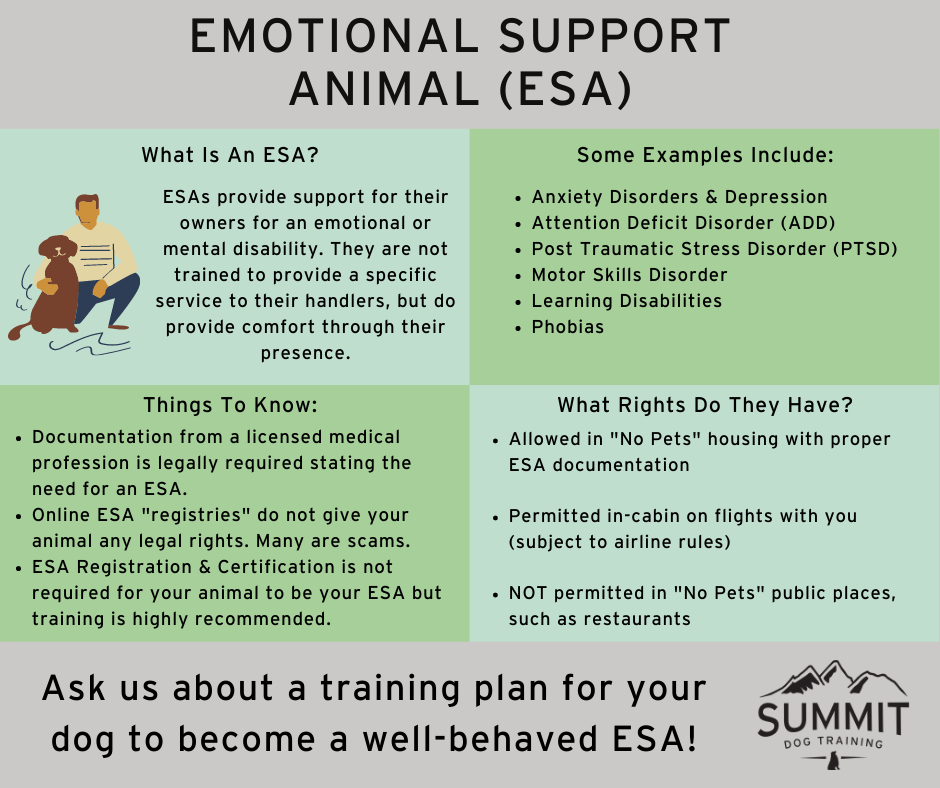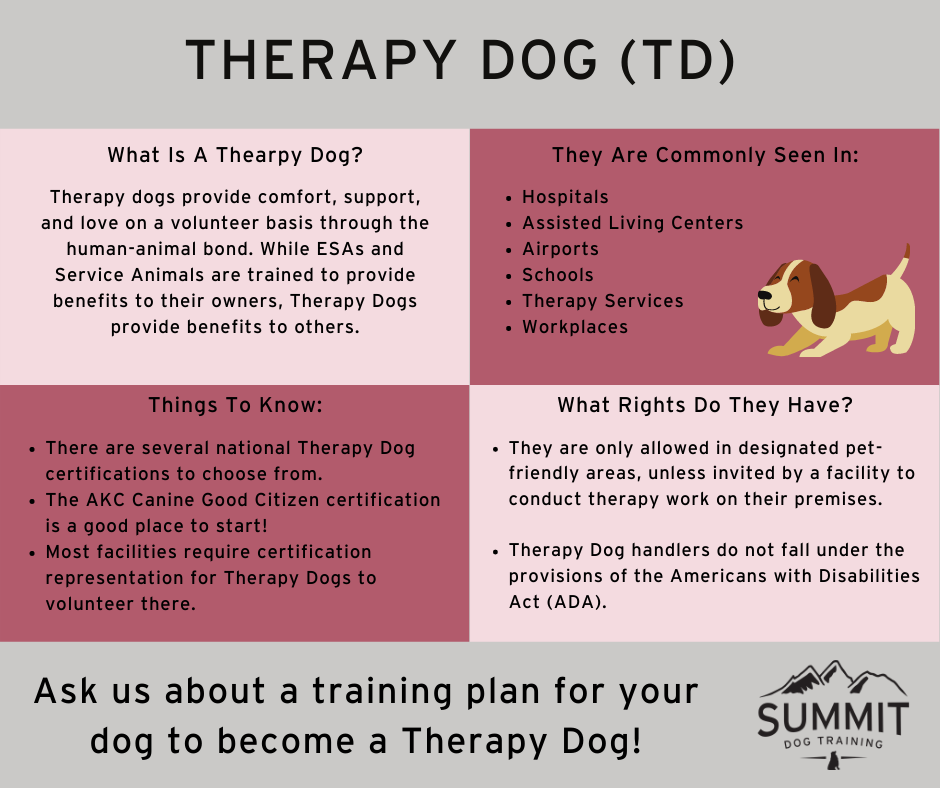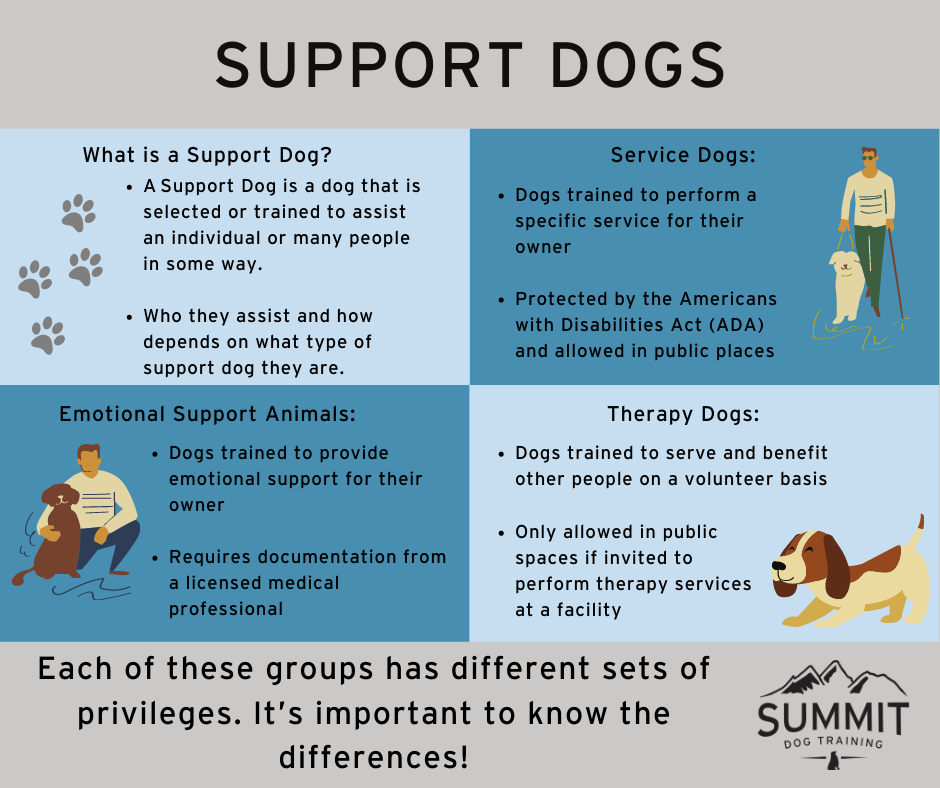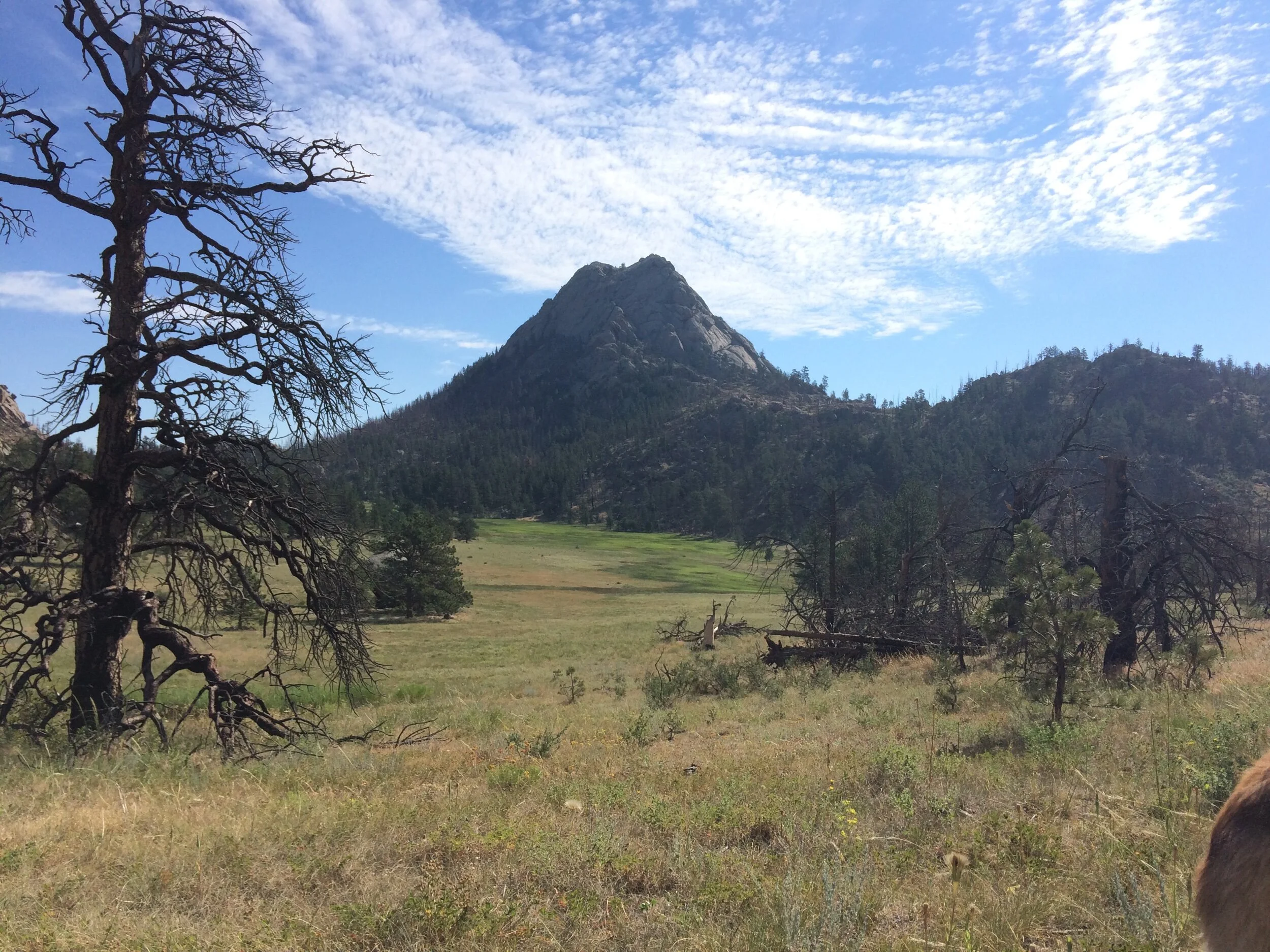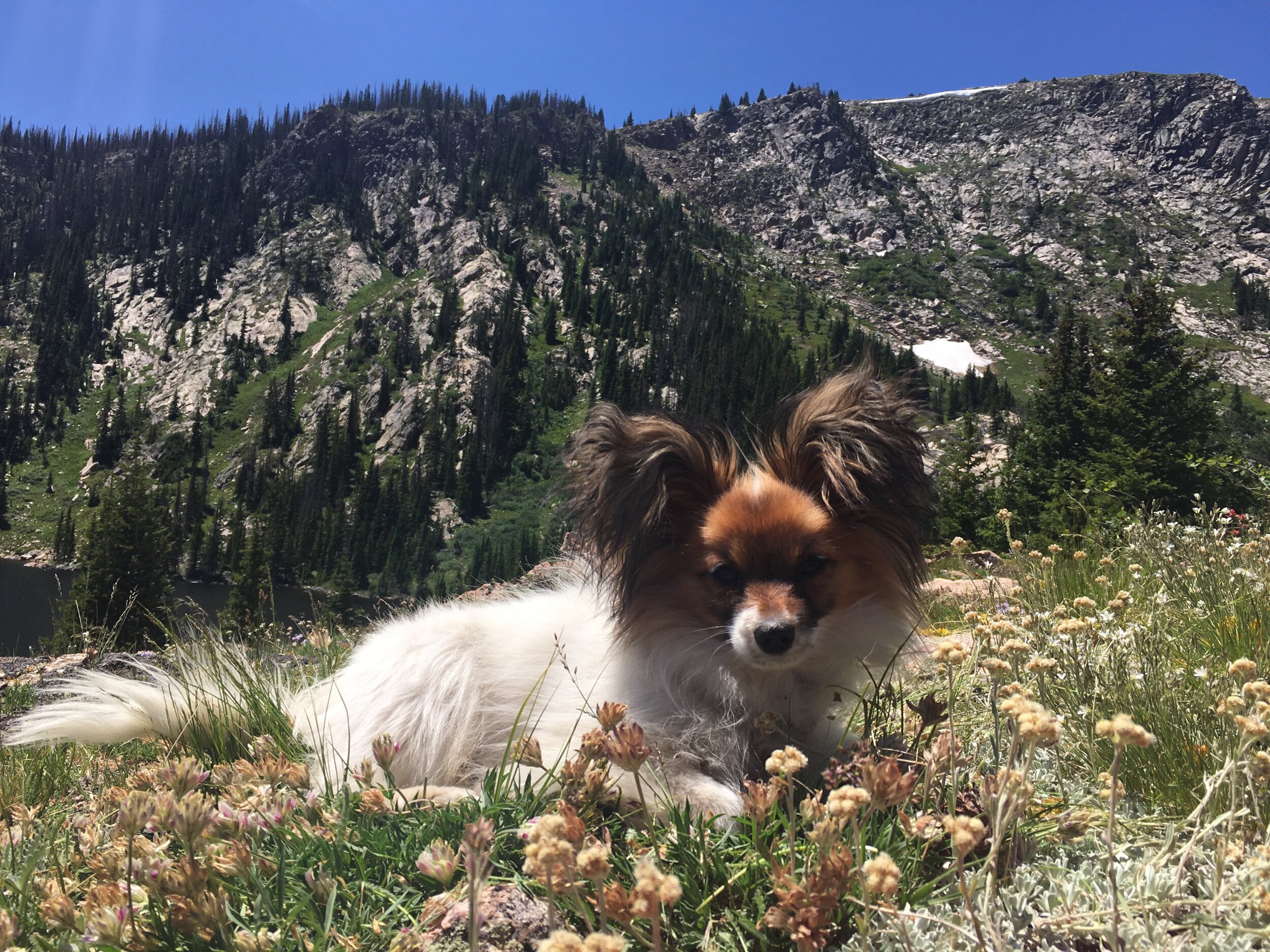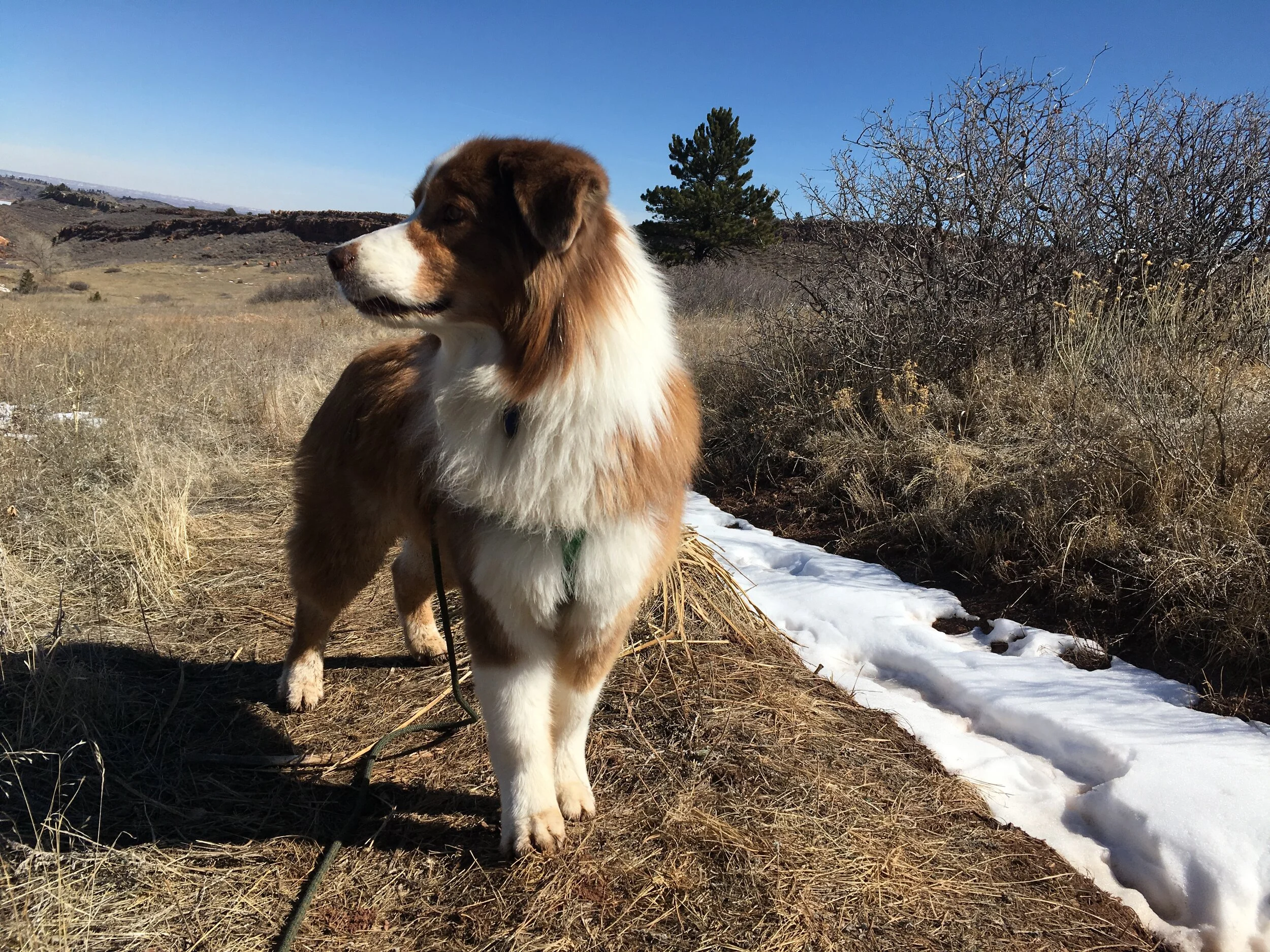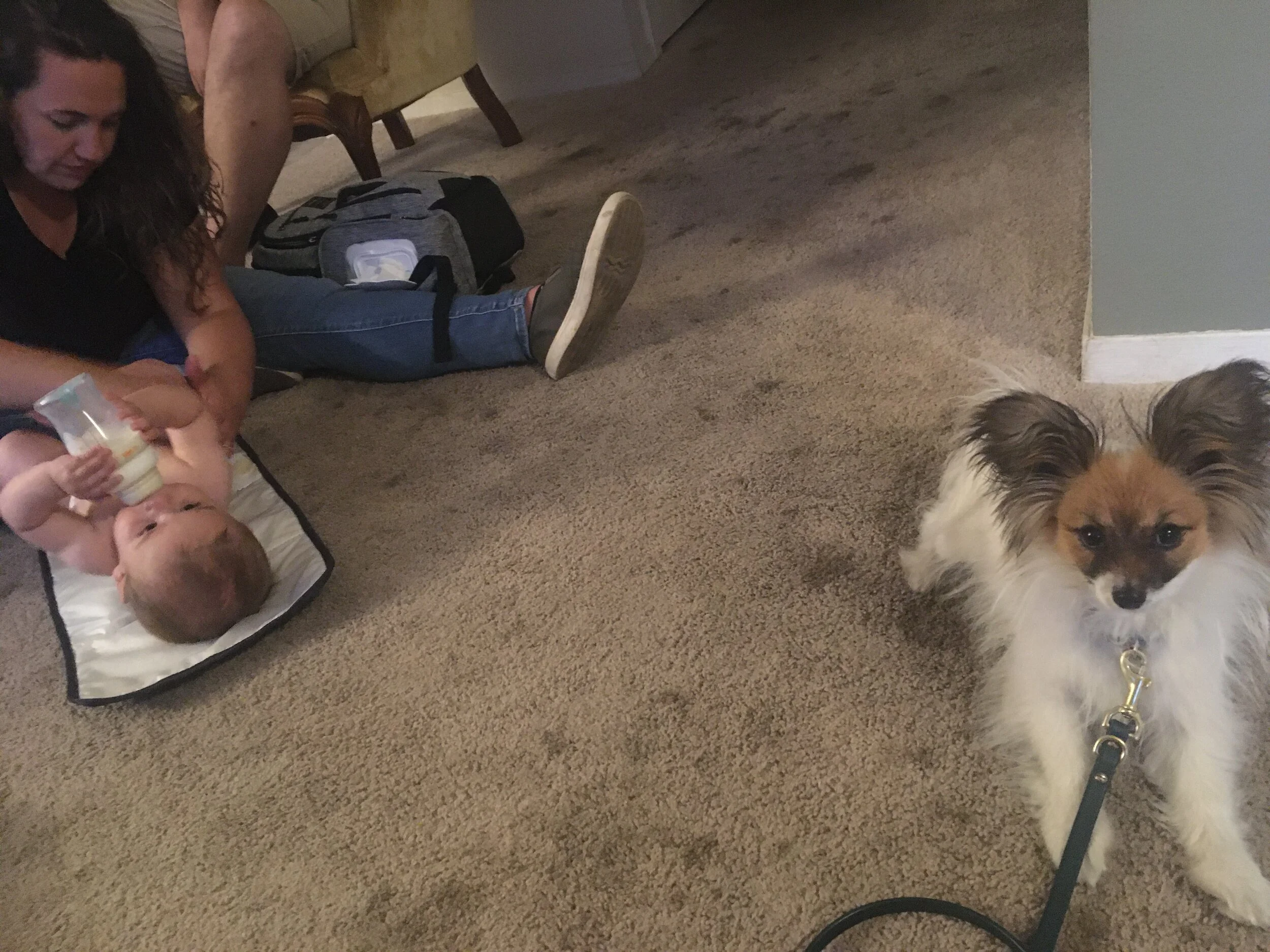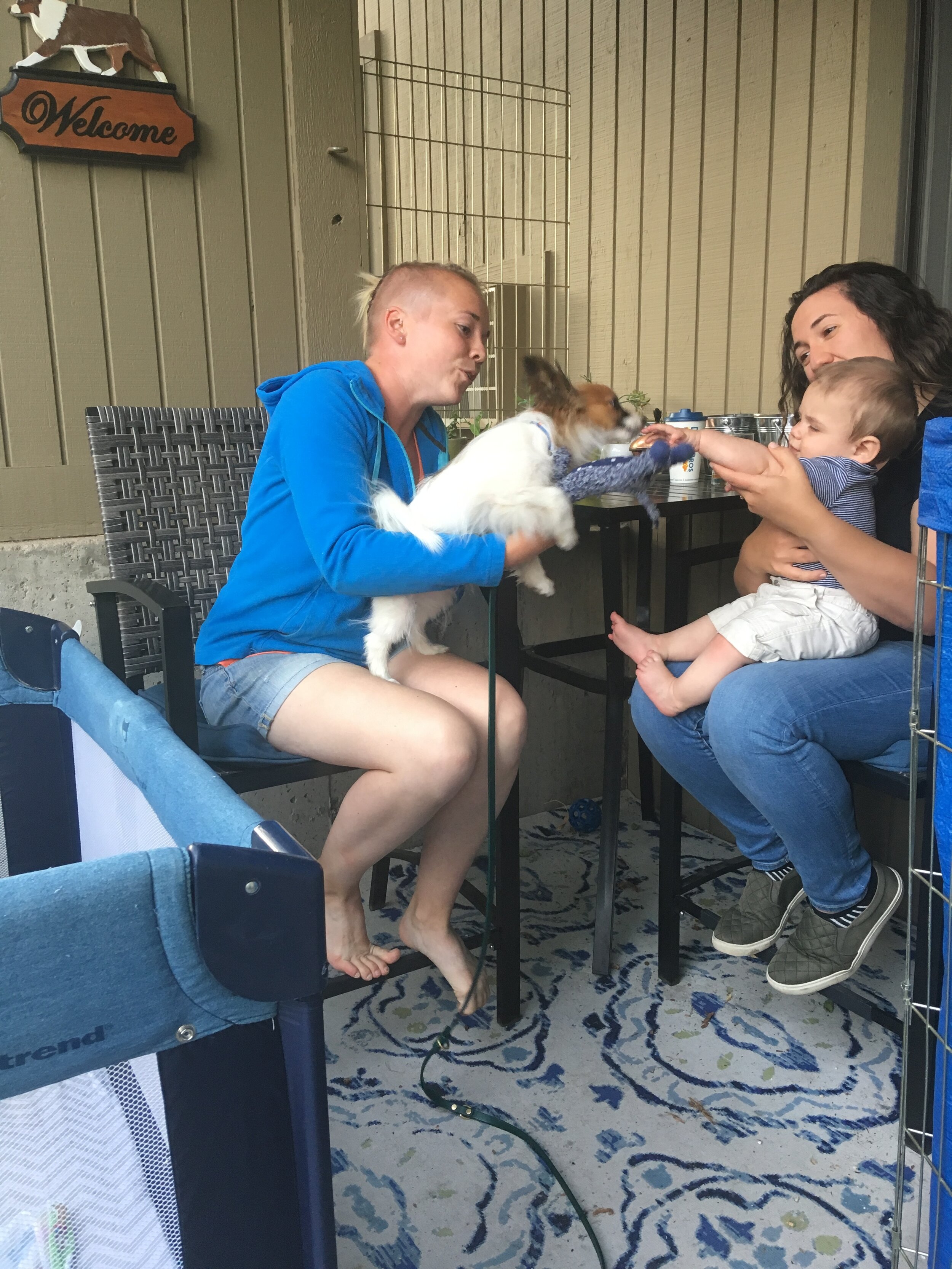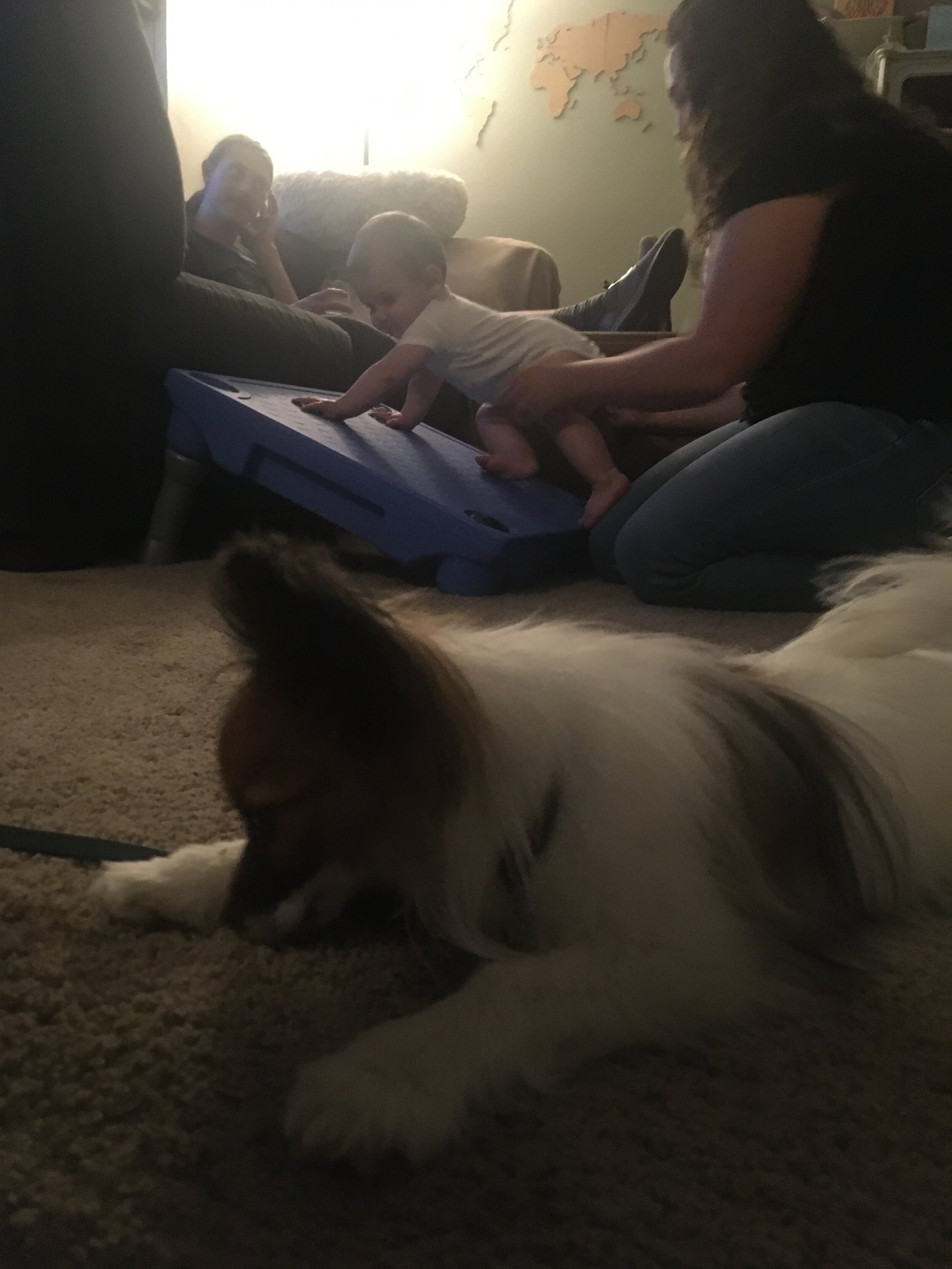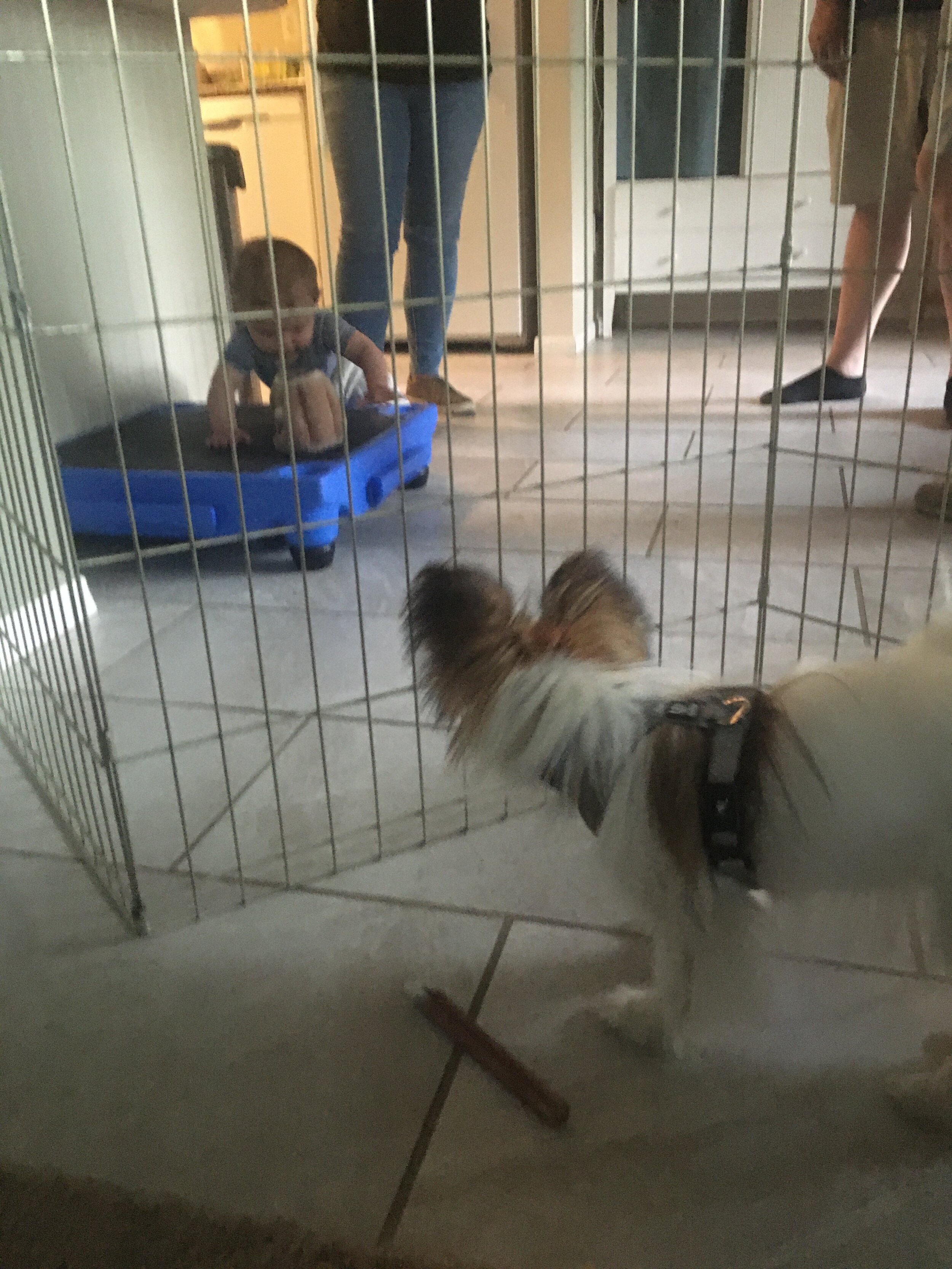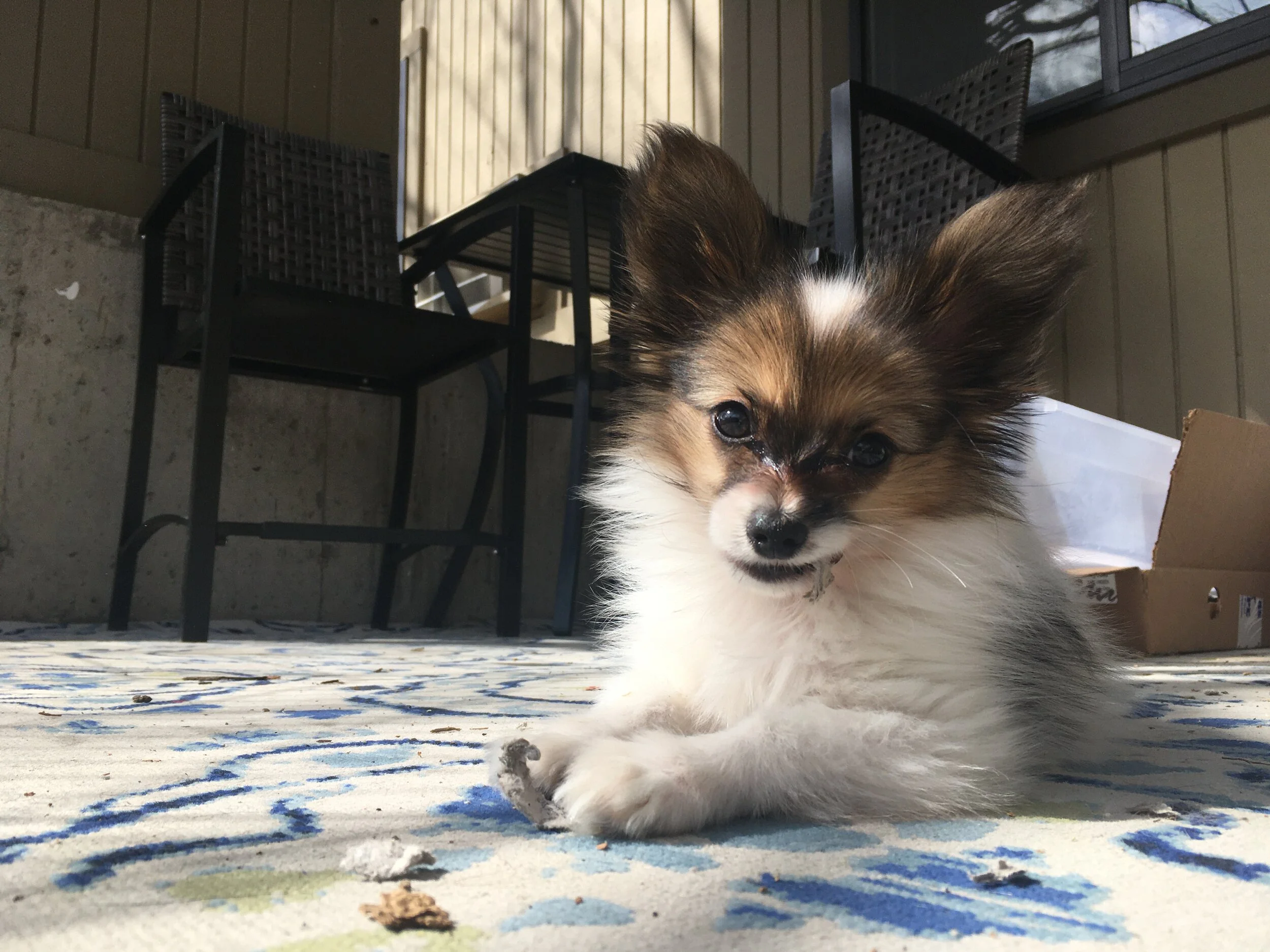September is National Service Dog Month! This is a great opportunity for doing a little bit of learning about service dogs, and other types of support dogs, to understand the differences and how to take your dog down each of these unique career paths. We get a lot of inquiries requesting “service dog training” when actually the prospective student is looking for therapy dog training - and vice versa! There is a lot of confusion around these terms, so let’s take a minute to learn how to distinguish between these canine support roles.
A “support dog” is a dog that is selected or trained to assist an individual or many people in some way. Who they assist (one person or many) and what they assist with depends on what type of support dog they are. In this blog, we’ll cover the different types of support dogs and the basic training paths toward your dog being successful in one of those support roles. Please note that some of this information is specific to the state of Colorado, so if you live elsewhere please confirm the specific regulations for your region.
Before we get into the details of the different types of support dogs, let's first talk about the Canine Good Citizen (CGC) evaluation. You’ll see this evaluation referenced throughout this blog. While this isn’t a requirement for all of the support dog jobs (read more details in each support dog section), it is a great benchmark evaluation of your dog’s skills before entering any of these support roles.
To pass the CGC evaluation, your dog needs to master 10 skills, and demonstrate these in a test administered by an AKC CGC Approved Evaluation (at Summit Dog Training, that’s Amber!).
Skills Tested:
Accepting a friendly stranger
Sitting politely for petting
Appearance and grooming
Loose leash walking
Walking through a crowd
Sit and down on command and staying in place
Coming when called
Reaction to another dog
Reaction to distraction
Supervised separation
But what are the benefits to achieving your CGC certification? We highly encourage all our students to work towards becoming CGC-certified because the advanced training and evaluation process promotes responsible pet ownership, as well as provides mental and physical exercise for your dog. Additionally, the certification provides socialization skills and helps your dog to be the best companion they can be! This course also encourages the human-animal bond which leads to better communication between you and your dog for successful training.
Suggested Training Plan For CGC
Step 1: Basic obedience and public manners. Take either Summit Dog Training’s Puppy Basics if your dog is 4-6 months old, or Good Dog Basics if your dog is 6 months or older.
Step 2: Continue refining skills and building the human-animal relationship. Take a Summit Dog Training Level 2 class of your choice. We recommend taking more than one Level 2 class before moving on to Level 3.
Step 3: Become a Canine Good Citizen! Complete Summit Dog Training’s Level 3 Canine Good Citizen and Therapy Dog Prep class. After the class, pass the CGC certification test provided by Amber.
To learn more about the CGC evaluation process, click here.
Emotional Support Animal (ESA)
Update Spring 2021: Rules have changed and most airlines no longer allow ESAs on cabin flights.
Emotional Support Animals provide support to their owners for an emotional or mental disability, like: a learning disability, Attention Deficit Disorder (ADD), anxiety disorders, depression, motor skill disorders, PTSD, phobias, and more. ESAs are not trained to provide a specific service for their handlers, but rather provide comfort through their presence.
Documentation from a licensed medical professional is currently the only legal requirement for your dog to become an ESA. An online registration does not give your animal any legal rights and is not required for your animal to be considered an ESA. Any online site advertising an ESA registry for your service dog is likely a scam, as a registry is not required at all. The only requirement is a letter from your licensed medical professional.
Being an ESA gives your dog special rights. If your medical professional determines that you qualify for an ESA and provides the proper documentation, you are allowed to be accompanied by your ESA in the following places:
“No Pets” Housing Policy under the FHA: Landlords cannot refuse you housing on the basis of your animal living with you if you have proper ESA documentation. They also cannot evict you on the basis of you having your ESA in the house. They must provide “reasonable accommodation,” which includes waiving any pet fees they may usually charge. Your ESA must not cause an “undue burden” to the landlord’s finances, and must not be a threat to other animals or tenants.
However, being an ESA does not give your dog unlimited rights. ESA documentation does not give you the right to bring your dog into work offices if your employer has a no-pet policy. You may request through your Human Resources department to be able to bring your ESA with you to the workplace, but they may legally ask for your ESA letter and your request may be declined. Additionally, most public buildings including libraries, university buildings, and businesses do not allow ESAs on the premises.
Even though no specific training is required for your dog to be considered an ESA, it is a good practice to teach your dog above-average public manners so that they can safely accompany you where they are permitted. One of the biggest reasons that the U.S. Department of Transportation is considering changing the rules concerning ESAs on flights is due to the increased number of incidents that have occurred because of poorly trained animals being brought on flights as ESAs. Committing to a high level of training with your ESA is essential so that they can set a good example and help those allowances to continue into the future!
Suggested Training Plan For An ESA
Note: Remember, there is no “ESA Certification” for your dog. A letter demonstrating your need for an ESA comes from your licensed medical professional and is not connected to the specific animal you choose as your ESA. Training is currently not required for your dog to be considered your ESA, but it is HIGHLY recommended.
Step 1: Basic obedience and public manners. Take either Summit Dog Training’s Puppy Basics if your dog is 4-6 months old, or Good Dog Basics if your dog is 6 months or older.
Step 2: Continue refining skills and building the dog-human relationship. Take a Summit Dog Training Level 2 class of your choice. We recommend taking more than one Level 2 class before moving on to Level 3.
Step 3: Become a Canine Good Citizen! Complete Summit Dog Training’s Level 3 Canine Good Citizen and Therapy Dog Prep class. After the class, pass the CGC certification test provided by Amber.
Service Animal (SA or SD)
Service animals are specifically trained to perform tasks or services for an individual with a disability. Some examples of service animal tasks include:
Guiding those who are visually impaired or blind
Aiding those who are hard of hearing or Deaf
Alerting people to medical needs or emergencies such as seizures, low blood sugar, allergens, to remember to take their medications, etc.
Assisting those with mobility impairments
Providing psychiatric services for owners with PTSD, OCD, schizophrenia, or other disabilities that require psychiatric aid or medications
Individuals with disabilities who are accompanied by their service animal are protected by the Americans with Disabilities Act (ADA). Service animals are allowed in any space that is open to the public. No extra fees may be mandated for housing for you and your service animal, and they are allowed in airplane cabins for flights at no extra cost. Representatives of public spaces cannot ask questions about your disability or demand proof of your animal’s certification. It is not required by law that a service animal wear a vest or any other identification. If your service animal’s status is not obvious, managers/owners/employees/overseers of public spaces may ask you to identify your animal as a service animal verbally by stating what service they provide to you. However, you cannot be charged fees for bringing your service animal into a public space, but you can be charged for any damage your animal does to the space. Your service animal can also be excluded from or asked to leave a public space if the animal represented a threat to public health and safety.
There is no required “service dog certification,” although your dog must be trained in specific skills to help you in order to be considered a service dog. Furthermore, your service dog needs above-average public manners so that they can safely accompany you wherever you need to go. If your service dog is causing a disruption or behaving aggressively towards other people or dogs in a public place, you may be asked to leave despite your rights to a service dog under the ADA. Training for both public manners and your specific needs are both essential pieces of a service dog training plan.
Suggested Training Plan for Service Dogs
Step 1: Basic obedience and public manners. Take either Summit Dog Training’s Puppy Basics if your dog is 4-6 months old, or Good Dog Basics if your dog is 6 months or older.
Step 2: Continue refining skills and building the dog-human relationship. Take a Summit Dog Training Level 2 class of your choice. We recommend taking more than one Level 2 class before moving on to Level 3.
Step 3: Become a Canine Good Citizen! Complete Summit Dog Training’s Level 3 Canine Good Citizen and Therapy Dog Prep class. After the class, pass the CGC certification test provided by Amber.
Step 4: Continue training to work towards goal behaviours for your desired services and tasks. Depending on the goals, Summit Dog Training may be able to help you teach these service dog tasks! We also recommend Canine Community Heroes in Greeley, CO for specialized service dog training expertise.
Step 5: Seek certifications if you would like to achieve them (but avoid unnecessary/costly online registration that don’t actually provide you any real “proof” of your animal’s status).
Therapy Dog
Therapy dogs provide comfort, services, and benefits on a voluntary basis through the human-animal bond. Their affection and interactions improve the lives of the people who the dog visits with their owner. Therapy dogs are well-trained, friendly dogs that are welcomed into facilities, upon approval, on a volunteer basis. Some facilities require certification representation for therapy dogs to volunteer there. While service dogs and ESAs are trained to provide support to their handlers only, therapy dogs are trained to provide comfort and support to other people.
Therapy dogs are commonly seen in:
Hospitals
Assisted living centers
Airports
Schools
Workplaces
Therapy services
Therapy dog handlers do not fall under the provisions of the ADA, and thus therapy dogs are only permitted in public areas that are designated pet-friendly, unless specifically invited by a facility to conduct therapy work on their premises.
Suggested Training Plan For Therapy Dogs
Step 1: Basic obedience and public manners. Take either Summit Dog Training’s Puppy Basics if your dog is 4-6 months old, or Good Dog Basics if your dog is 6 months or older.
Step 2: Continue refining skills and building the dog-human relationship. Take a Summit Dog Training Level 2 class of your choice. We recommend taking more than one Level 2 class before moving on to Level 3.
Step 3: Become a Canine Good Citizen! Complete Summit Dog Training’s Level 3 Canine Good Citizen and Therapy Dog Prep class. After the class, pass the CGC certification test provided by Amber.
Step 4: Pass an official Therapy Dog test and certification (if desired or needed for access to facilities where you hope to volunteer).
In Northern Colorado, we refer our students to Larimer Animal People Partnership (LAPP) or Human-Animal Bond in Colorado (HABIC) for completing the Therapy Dog certification process.
It is important to know the differences between each type of support dog as an owner and as a public civilian interacting with them. Understanding each dog’s role helps to better set them up for success and keeps everyone safe. If your training goals align with one of these roles, you can use these sample training plans to get started, or reach out to us for more information and help!
Note: The training plans outlined here are guidelines based on the average inquiry that we receive. If you and your dog have unique goals, or have already done some training together and aren’t sure where to jump in next, don’t hesitate to reach out to us for more customized assistance!



